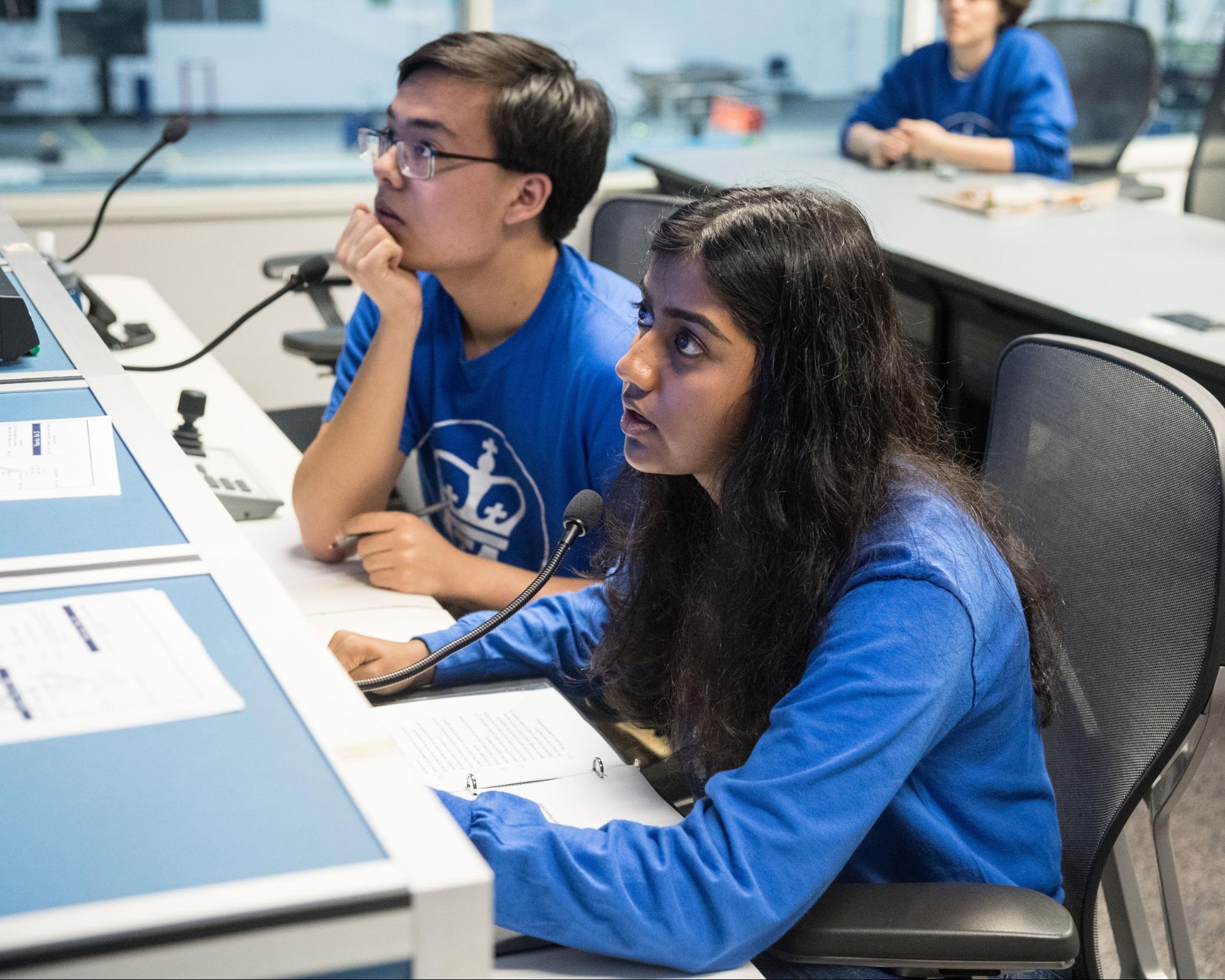Micro-g NExT Test Week at Johnson Space Center Neutral Buoyancy Laboratory (NBL) posted in microg
June 17, 2019

Micro-g NExT is an annual NASA design challenge to design and manufacture a device that functions in a microgravity environment and addresses a problem that astronauts face on either the International Space Station (ISS) or during spacewalks. One such problem is sharp edges on the handrails along the outside of the ISS created by collisions with Micrometeoroids and Orbital Debris. Astronauts rely on these handrails to move around during Extravehicular Activities (EVAs) and sharp edges pose a significant hazard to astronaut gloves. This year’s Micro-g NExT challenge asked us to design a sharp-edge detection and removal device to eliminate the risk of sharp edges on the handrails. This two part device would be required to first detect the specific location of the sharp edge along the handrail and then remove or cover the edge without introducing new safety hazards.
Our device, SHIRLEE (Sharp-Edge Handheld Identifier & Remover in Low-Gravity Extravehicular Environments), shown below, addresses both the detection and removal components of the challenge. The two detection bars protruding from SHIRLEE are shaped to fit the two different curvatures of the handrail faces. When run along a handrail, the detection bar catches on sharp edges and rotates outward which alerts the astronaut of the encountered sharp edge. Beneath each detection bar is a skate stone, which can be accessed once a bar has rotated outward. Skate stones are small blocks of ceramic steel used to reshape and smooth down nicks and sharp edges on the blades of ice skates. SHIRLEE uses these stones in the same way; after detecting a sharp edge, the skate stone can be rubbed against the sharp edge, smoothing down and removing the hazard.


After being selected for the challenge and spending the year designing and manufacturing SHIRLEE, we traveled to the Johnson Space Center Neutral Buoyancy Laboratory (NBL) in Houston, Texas to test the device during our designated Test Week. The NBL is a training facility for astronauts that features a 6.2 million gallon pool. Underwater, it is possible to simulate a microgravity environment and learning to navigate this environment is an essential part of astronaut training. In addition, the pool contains a replica of the ISS, which astronauts use to train and prepare for spacewalks. Functionality in a microgravity environment is not only crucial for astronauts, but is also an essential requirement for the tools astronauts take with them. The purpose of our test week was for an NBL diver to test SHIRLEE underwater to see how it would perform in a microgravity environment.
Our first day at the NBL was focused on safety. To ensure diver and astronaut safety, every material or device to enter the pool must be thoroughly reviewed. After meeting the other teams, the divers, and the safety review board, we presented our Test Readiness Review, providing an overview of SHIRLEE and how we addressed each potential safety concern in the design of our device. SHIRLEE was approved for testing the next morning and we finalized our operations plan (the step by step directions we read to the diver during testing).
Our test took place the next morning. First, we had a poolside check-in with our diver, Emily, to make sure she understood the basics of the device and how it should be handled. Once in the control room, team member Swati read the operations plan to Emily over a two-way radio while watching the test in real time on several monitors. Our test was a success! SHIRLEE detected and removed several sharp edges on a test handrail and the diver gave us very positive feedback, describing SHIRLEE as very effective and ergonomically easy to use.




We spent the remainder of the trip compiling testing feedback, touring the Johnson Space Center (JSC), learning about other teams’ designs, and presenting our results. From seeing mission control to learning about suit and tool design from JSC engineers, we had the opportunity to see many crucial aspects of NASA firsthand. We also made some time for team bonding, celebrating a successful year with some movies, bowling, and karaoke. Both the yearlong mission and its culmination during test week were incredible and we can’t wait to see what’s in store for next year’s Micro-g team!

– Team Lion Edge
Liked that post? Check out the news page
